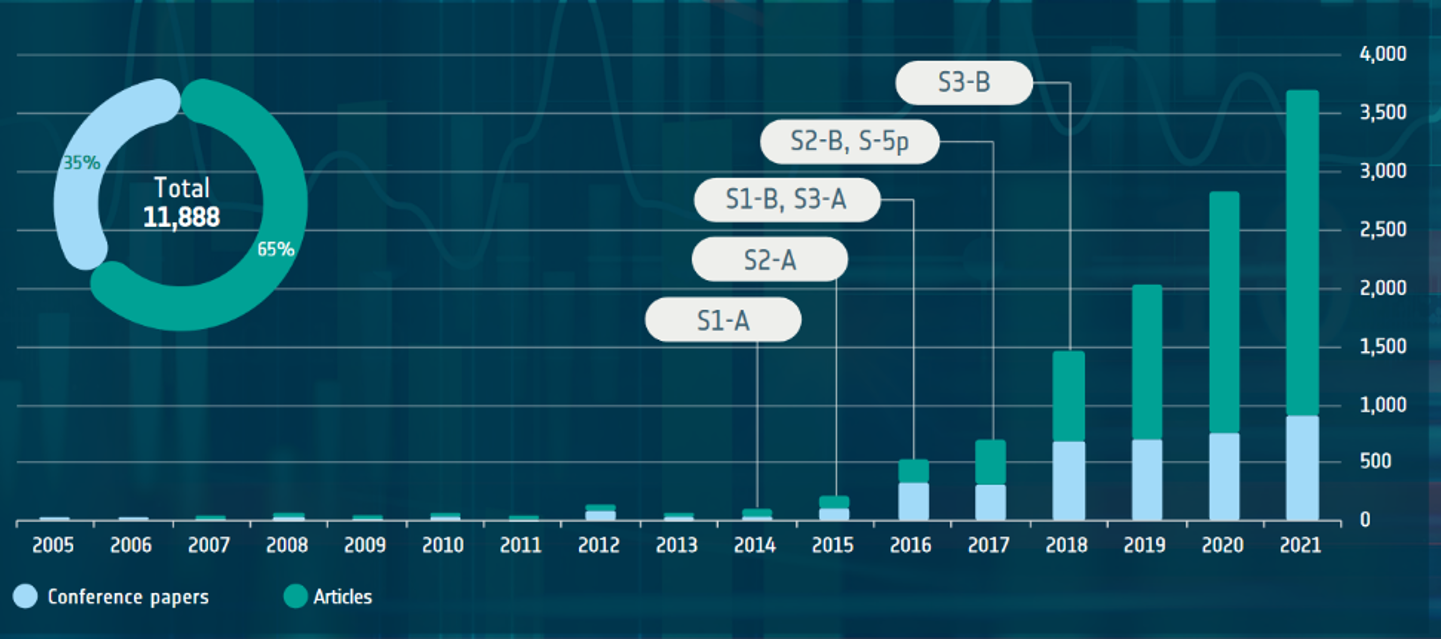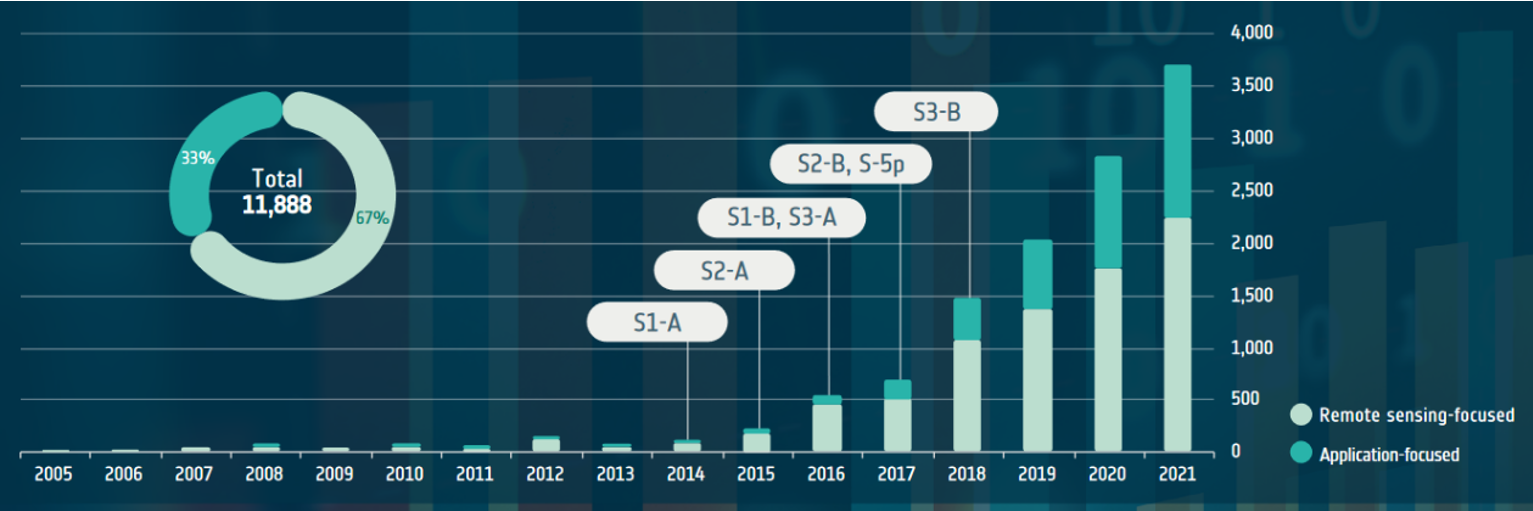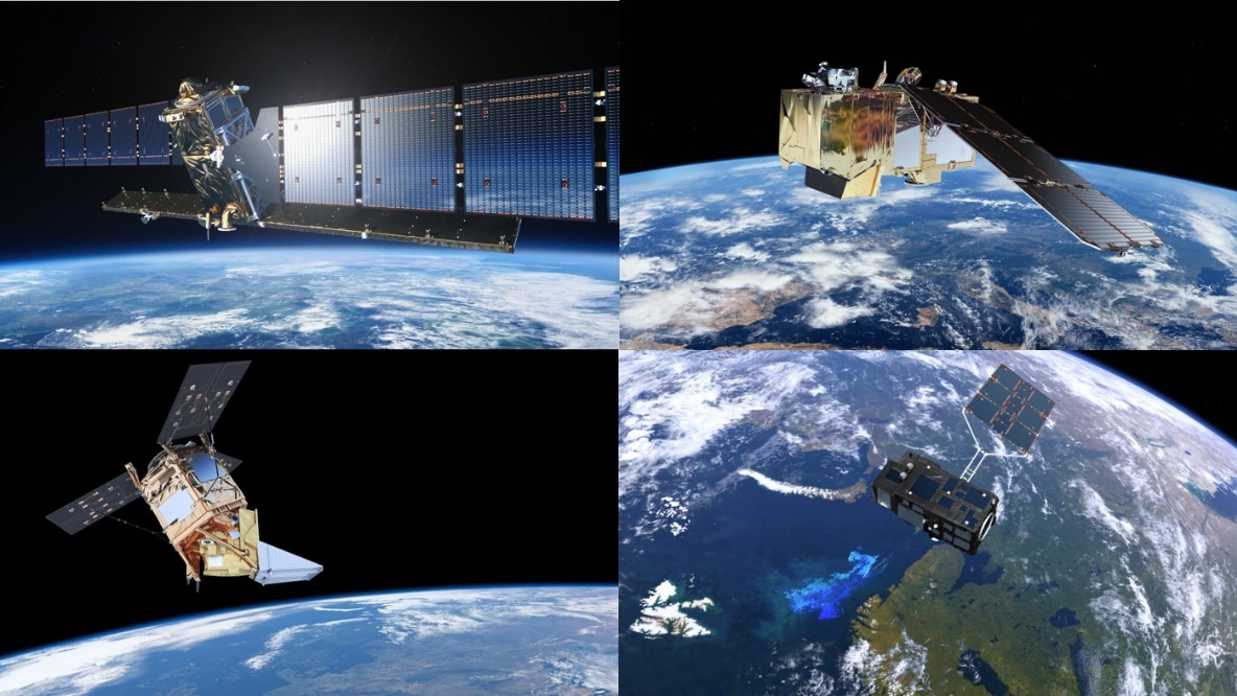Free and open data delivered by the Copernicus Sentinels are fueling a surge in scientific innovation, according to an extensive analysis of peer-reviewed literature.
The high-quality information that is flowing back to Earth from the satellites is enabling scientists from around the world to improve understanding of the planet and develop new applications.
This is helping ensure that European citizens continue to reap the enormous benefits of the Copernicus Sentinel missions.
Free and open data delivered by the Copernicus Sentinels are fueling a surge in scientific innovation, according to an extensive analysis of peer-reviewed literature.
The high-quality information that is flowing back to Earth from the satellites is enabling scientists from around the world to improve understanding of the planet and develop new applications.
This is helping ensure that European citizens continue to reap the enormous benefits of the Copernicus Sentinel missions.
The analysis – commissioned by ESA and the EU – drew on the Elsevier Scopus database, which is the world’s largest abstract and citation repository of peer-reviewed literature.
It revealed that, up to and including 2021, some 11 888 papers have drawn on data from Copernicus Sentinel-1, -2, -3 and -5P. These include 7 694 articles published in 890 different journals, as well as 4 194 conference papers presented at 475 separate conferences.
Copernicus Sentinel-1 and -2 had the largest publication volumes.
Year-on-year growth of Copernicus Sentinel-related articles and conference papers
Scientists from within Europe contributed to or led 51% of the total papers and, of these, Italian, German, French, Dutch, and Spanish authors delivered a high proportion of the publications.
Geographical spread of authors
Numbers of peer-reviewed papers related to the missions have continued to grow year-on-year, with 3 684 articles released in 2021, accounting for 31% of the total Sentinel-related journal and conference papers.
Around two thirds of the 11 888 articles were published in remote sensing-focused journals. The remainder were featured in application-focused publications.
Year-on-year growth for remote sensing-focused and application-focused publications
However, the analysis revealed that the proportion of papers published in application-focused journals has grown steadily over the past years, demonstrating the increasing uptake of Copernicus Sentinel data by the wider scientific community.
It also showed that hundreds of Sentinel-related publications are featured in high-quality remote sensing journals, such as Remote Sensing of Environment (437 publications) and IEEE Transactions on Geoscience and Remote Sensing (141 publications).
Several papers were featured in high-impact application-focused publications, including Nature Communications (4 publications) and Science of the Total Environment (74 publications).
Copernicus Sentinel-2 had the largest total publication volume of 6 187, up to and including 2021. This was followed by Copernicus Sentinel-1 with 5 505.
In the same period, 1 064 papers were published related to Copernicus Sentinel-3, which currently has fewer application domains than Copernicus Sentinel-1 and -2.
The most recent mission – Copernicus Sentinel-5P – had a total publication volume of 508 up to and including 2021. However, the mission displayed the highest year-on-year growth rate, and the largest share of application-focused publications.
The analysis formed part of the Sentinel Benefits Study, which aims to demonstrate how the Copernicus Sentinels and are improving the lives of European citizens according to six dimensions of value: socio-economic, socio-environmental, societal, regulatory, innovation and science.
The Sentinel Benefits Study is managed by the European Association of Remote Sensing Companies and is supported by Brussels-based company Evenflow, which creates insights to support new businesses, guide strategy and inform policy.
Dáire Boyle, consultant at Evenflow and analysis co-author, says, “Given that our analysis was limited to references of Sentinel data in titles, abstracts, and keywords of publications, we could not account for publications that only mentioned Sentinel usage in the core text. This implies that although the findings of this analysis already show quite a profound proliferation of the use of Sentinel data throughout academia, the numbers presented should still be considered conservative, with the true impact of Sentinel data likely being much higher.”




